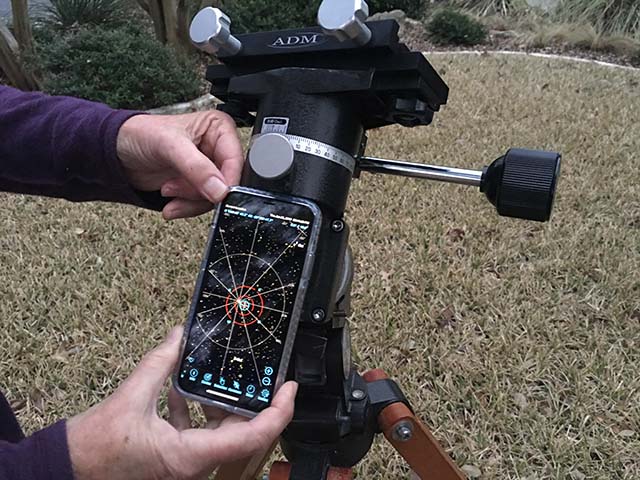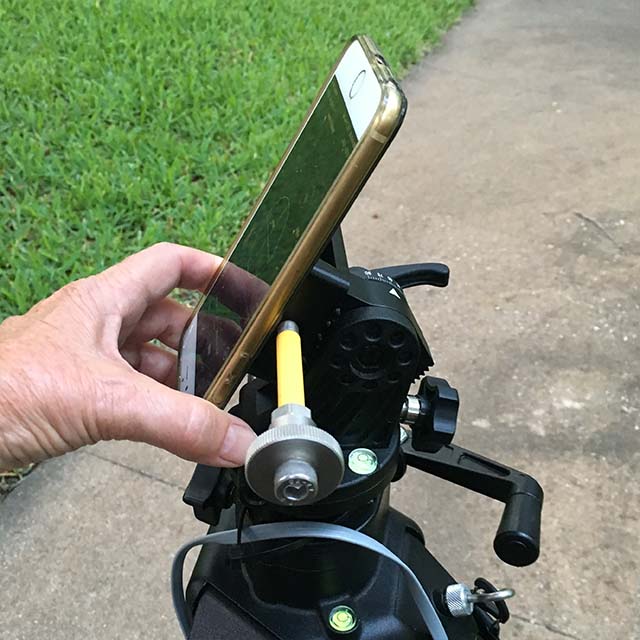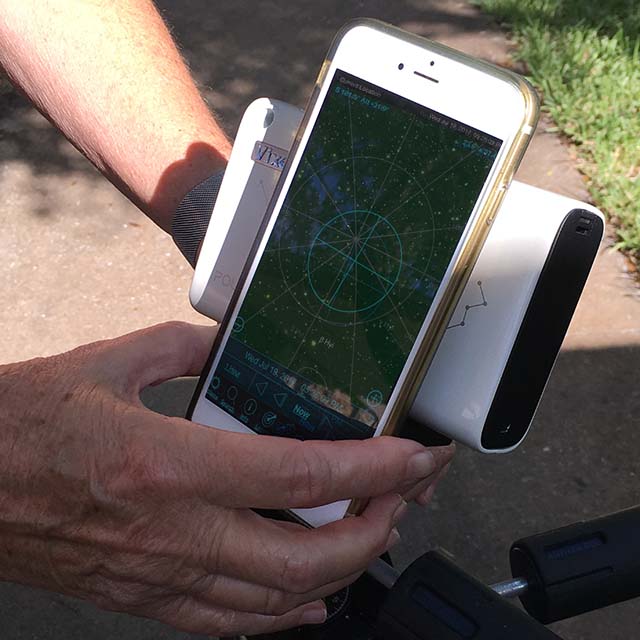- Images
- Blog
- Tools
- Questar
- The Questar telescope
- Questar resource links
- Search for Questar info
- 172mm Focal Reducer
- Afocal adapter for point and shoot camera
- Camera adapter lengths
- Camera adapter threading
- Camera connection
- Camera focusing
- Custom counterweight
- Drift Alignment Joy
- Finder Eyepiece Compatibility
- The Questar Moon 1981
- Questar Powerguide II Battery Life
- Questar Zone, How to Service Videos
- Red Dot finder mount for Questar
- Questar Viewing Table
- Wedge mounts
- White light solar filters comparison
- How to
- Get started in astronomy
- Astro RaspberryPi Camera and kin, the ASIAir and StellarMate
- Blind Smart-phone Equatorial Wedge or GEM Polar Alignment
- Camera phone adapter
- Celestron FirstScope with equatorial tripod mount
- Coat Pocket Astrophotography
- Day-lapse Images of Earthshine on the Crescent Moon
- Dobsonian Carrying Case
- DSO Astrophotography without a Telescope
- DSO imaging without a star tracker
- Estimating image resolution
- Lunar Eclipse Photography
- Moon photography - a dozen ways to shoot the Moon
- Meteor shower photography & planning
- Matching image sensor size to telescope resolution
- Narrow band imaging with color cameras
- Planetary Image Workflow
- Print and Display Astrophotography
- Observing
- Events
- More
- About
- Contact
Blind Smart-phone Equatorial Wedge or GEM Polar Alignment
How do you align your telescope's equatorial wedge when you can't see Polaris and don't have equipment with automatic alignment? For a long time I've done this with a compass and a level or their smart-phone equivalents.
A few weeks ago I found a much better way, using only a smartphone planetarium application to make both adjustments; illustrated in an article at Sky & Telescope Daylight Polar Alignment Made Easy by Spencer Rackley. This technique takes advantage of the large flat surface of an equatorial wedge before the telescope is mounted. It is just as easy to do a blind alignment with the celestial pole that's below the horizon. The result is that you can stand with your head up and easily see the phone display while you adjust the mount's polar alignment in both axes from the same display.

You may need to adjust your planetarium apps settings to use this technique. I use SkySafari, but other apps with a virtual or augmented reality, live, sky view may work. Your app display must show the celestial poles and an aiming cursor in its live augmented reality view. In SkySafari
- to view below the horizon, Settings / Horizon & Sky / Horizon Display / Show Horizon & Sky should be on and set to Transparent or Translucent.
- to view the celestial poles, Settings / Grid & Reference / Reference Points / Celestial Poles should be turned on.
- to bring up an aiming reticle, in Observe / Scope Display turn on a field of view and turn the Crosshairs option on. Also make sure that Observe / Scope Display / Show Even if Not Connected to Telescope is on.
- to activate the heads up VR view, activate the Compass Gyro mode.
If your planetarium doesn't show the celestial poles, you may be able to turn on a RA/Dec coordinate grid or numerical coordinate display that will work. In the SkyView Lite app I needed to aim for a Declination of -90. In Star Walk I had to turn on a Telrad reticle display and search for Polaris Australis. The best planetarium apps for this use will have the flexibility of SkySafari to easily show the celestial poles and an aiming reticle in a VR view.
Like the compass and level technique, this approach will work day or night anywhere in the world. The altitude and azimuth settings of your wedge are adjusted using only a planetarium app on your smart-phone. The easiest placement of the smart-phone on your wedge or mount points it towards the ground. This results in aligning to the celestial pole that is not visible in your sky. In the Northern Hemisphere we use the south celestial pole for alignment. It helps if you smart-phone or case has a flat back like the iPhone, but you can probably make almost any one work. This procedure works for a fork mounted telescope using an equatorial wedge.
- Set your wedge's altitude adjustment to reflect your current lattitude (on my Sky Watcher mount this is 90 - lat).
- Level your tripod and orient the mount wedge roughly in the direction of the celestial pole.
- Open your smart phone planetarium app and activate an aiming reticle and a virtual reality live sky view.
- Hold your smart phone against the mounting plate on the wedge. In the northern hemisphere the smart-phone will be pointing in the opposite direction from Polaris. Your planetarium app should show the sky near the south celestial pole. If not you may need to change the app settings so that it shows the celestial poles and objects below the horizon.

- Adjust your wedge altitude and azimuth settings to center the south celestial pole in the reticle shown in your planetarium application.

- Remove your phone and mount your telescope on the wedge.
The picture below shows the same process with a Vixen Polarie star tracker camera mount and a pan-tilt head used in place of a wedge.

You now have a reasonably good polar alignment even during daylight. If needed, you can refine your alignment using a drift alignment procedure. If you have a German Equatorial Mount you may be able to come up with a similar procedure that keeps the phone oriented so that you can see it while making adjustments. You will need to set and lock your mount Right Ascension and Declination adjustments on a GEM so that you have a flat surface that is perpendicular to the mounts polar axis.
My old Vixen Polaris German equatorial mount has a circular boarder on the cutout for the polar alignment scope that works fine for this technique. It may be that the best spot on your mount will be on the other side and you will want to use your own hemisphere's celestial pole. The only disadvantage of that is that you will need to position your head lower towards the ground to see the display.
Polar Scope Align Pro
The Polar Scope Align Pro app has added a bunch of useful tools since I first started using it. One of these is a Daytime / No Polarscope Alignment tool (the Sun icon). This tool provides the same convenient phone placement for alignment as described here, with an even simpler interface. It's now my preferred tool for daytime or initial setup alignments. The other polar scope alignment tools, target finding tools, information, and calculators make this a must have app for astrophotographers with a smart phone.
Problems?
With any compass based alignment - fences, decking, or other near by objects with lots of iron in them may interfere with a good alignment by distorting the earth's magnetic field. Over the years I've gotten good results with both a compass and level and with my iPhones. Almost all of my solar system images are made after just a blind alignment. I only do a drift align for long exposure DSOs or if I have a problem keeping my subject framed over a typical 3 minute run of short exposures.
If you have problems with the compass in your phone, try this to trigger a recalibration: Make sure that you have your phones location services enabled and swing your phone in a large figure 8 motion.
If problems persist, check your telescope wedge and mounting hardware. Is it all non-magnetic materials like plastic, aluminum, or stainless steel? Run a small compass around your hardware to locate any magnetic parts. Replace steel hardware with non magnetic hardware if possible. Placing your phone symmetrically between any magnetic hardware will minimize problems.
Comparing your electronic compass readings with a precision magnetic compass may reveal any repeatable errors due to your phone's hardware. Record any deviation and adjust for it in your alignments. Check your phone's level by rotating the phone in place on any surface and checking for a consistent reading.
Using a planetarium app should offer the same accuracy as your phone's compass and level, with the convenience of being able to adjust both azimuth and altitude at once using a single convenient placement of the phone.
Content created: 2017-06-17 and last modified: 2020-04-22
Comments
![]() Submit comments or questions about this page.
Submit comments or questions about this page.
By submitting a comment, you agree that: it may be included here in whole or part, attributed to you, and its content is subject to the site wide Creative Commons licensing.
FB:Steve Dufy
2017-06-17
This will help get aligned for the eclipse
FB:Steve Siedentop
2017-06-17
I've been using a similar method for a while, but with a different app. Some "gotchas" to keep in mind...
Before mounting it, you may need to move your phone in a figure 8 motion to calibrate the magnetometer. Also, if your mount is made from ferrous metal, your accuracy will be affected. For most uses, the drift will be inconsequential, but for polar alignment it will matter.
FB:Rob Pettengill
2017-06-17
I've added a section to the write up on resolving problems with blind compass or smart-phone alignments.
FB:Bob Geoghegan
2017-06-17
That's an interesting idea Rob, thanks. For phones with a rounded back, I wonder if the phone face could be placed against the wedge . Then the pole in one's own hemisphere would be used.
FB:Rob Pettengill
2017-06-17
I use a dovetail clamp on my wedge so centering a phone with a rounded back on it would probably work well. Otherwise using the face and sliding the phone up just enough to show the NCP should work.
FB:Bob Geoghegan
2017-06-17
I use a Celestron wedge for my Q4. A phone with a 5 inch screen reaches across the wedge's mounting plate with no wobble. Now if we'd just get some clear skies so I can test this for real... And I missed something obvious: it would work better to hold the phone screen against the underside of the wedge facing up and using the South CP. Then you don't have to kneel beneath the wedge to see the phone screen.
Rob Pettengill
2018-01-25
Thanks to Woody Schlom for his suggestions clarifying these directions.
Rob Pettengill
2020-03-12
The video I originally linked to has been taken down, and I've replaced it with a note I found at Sky & Telescope.

How to
Starter telescopes for beginners
Getting started in astrophotography?
Choose & setup a camera for astrophotography
Astro RaspberryPi Camera and kin, the ASIAir and StellarMate
Blind Smart-phone Equatorial Wedge or GEM Polar Alignment
Celestron FirstScope with equatorial tripod mount
Day-lapse Images of Earthshine on the Crescent Moon
DSO Astrophotography without a Telescope
DSO imaging without a star tracker
Overview & equipment for lunar eclipse photography
Framing and tracking a lunar eclipse
Moon photography - a dozen ways to shoot the Moon
Meteor shower photography & planning
Matching image sensor size to telescope resolution
Narrow band imaging with color cameras
Print and Display Astrophotography

 Get started in astronomy
Get started in astronomy